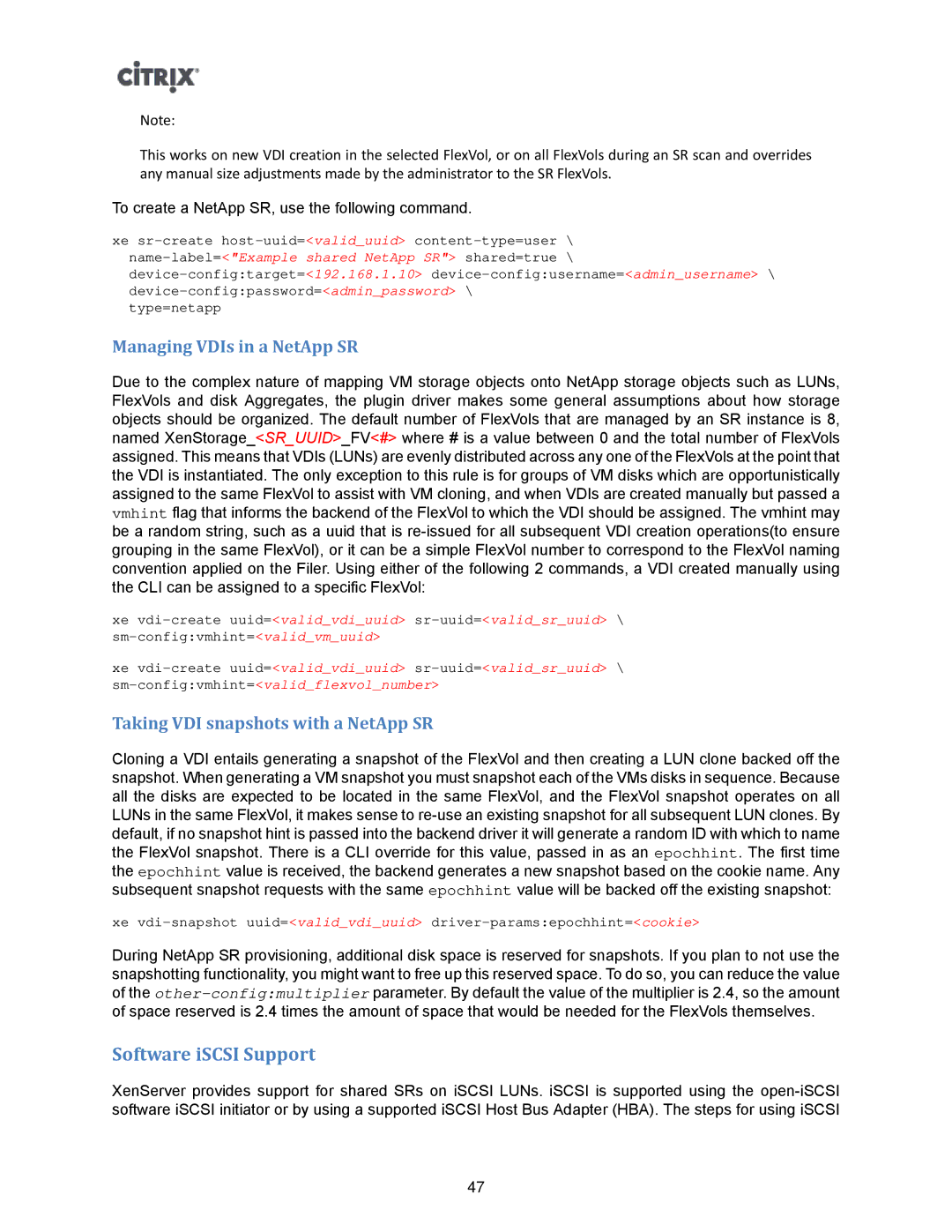Note:
This works on new VDI creation in the selected FlexVol, or on all FlexVols during an SR scan and overrides any manual size adjustments made by the administrator to the SR FlexVols.
To create a NetApp SR, use the following command.
xe
type=netapp
Managing VDIs in a NetApp SR
Due to the complex nature of mapping VM storage objects onto NetApp storage objects such as LUNs, FlexVols and disk Aggregates, the plugin driver makes some general assumptions about how storage objects should be organized. The default number of FlexVols that are managed by an SR instance is 8, named XenStorage_<SR_UUID>_FV<#> where # is a value between 0 and the total number of FlexVols assigned. This means that VDIs (LUNs) are evenly distributed across any one of the FlexVols at the point that the VDI is instantiated. The only exception to this rule is for groups of VM disks which are opportunistically assigned to the same FlexVol to assist with VM cloning, and when VDIs are created manually but passed a vmhint flag that informs the backend of the FlexVol to which the VDI should be assigned. The vmhint may be a random string, such as a uuid that is
xe
xe
Taking VDI snapshots with a NetApp SR
Cloning a VDI entails generating a snapshot of the FlexVol and then creating a LUN clone backed off the snapshot. When generating a VM snapshot you must snapshot each of the VMs disks in sequence. Because all the disks are expected to be located in the same FlexVol, and the FlexVol snapshot operates on all LUNs in the same FlexVol, it makes sense to
xe
During NetApp SR provisioning, additional disk space is reserved for snapshots. If you plan to not use the snapshotting functionality, you might want to free up this reserved space. To do so, you can reduce the value of the
Software iSCSI Support
XenServer provides support for shared SRs on iSCSI LUNs. iSCSI is supported using the
47
